The challenges faced in Clontarf in Dublin are likely to be mirrored across Ireland in the coming years, as coastal communities and the state grapple with how to protect against flood risk, while also preserving much-loved environments.
Towards the western end of Dublin’s Clontarf promenade, the low concrete wall ends, leaving just a tumble of rocks and a boundary of shrubby grasses and bushes between the sea and the land.
“This is where it flooded really badly,” said Antoinette O’Neill, on a blustery Monday in late August, wrapping a long cardigan around herself.
Water came across further along the walk as well, says O’Neill, who lives in the neighbourhood and sits on the Clontarf Residents Association. “But here was particularly bad.”
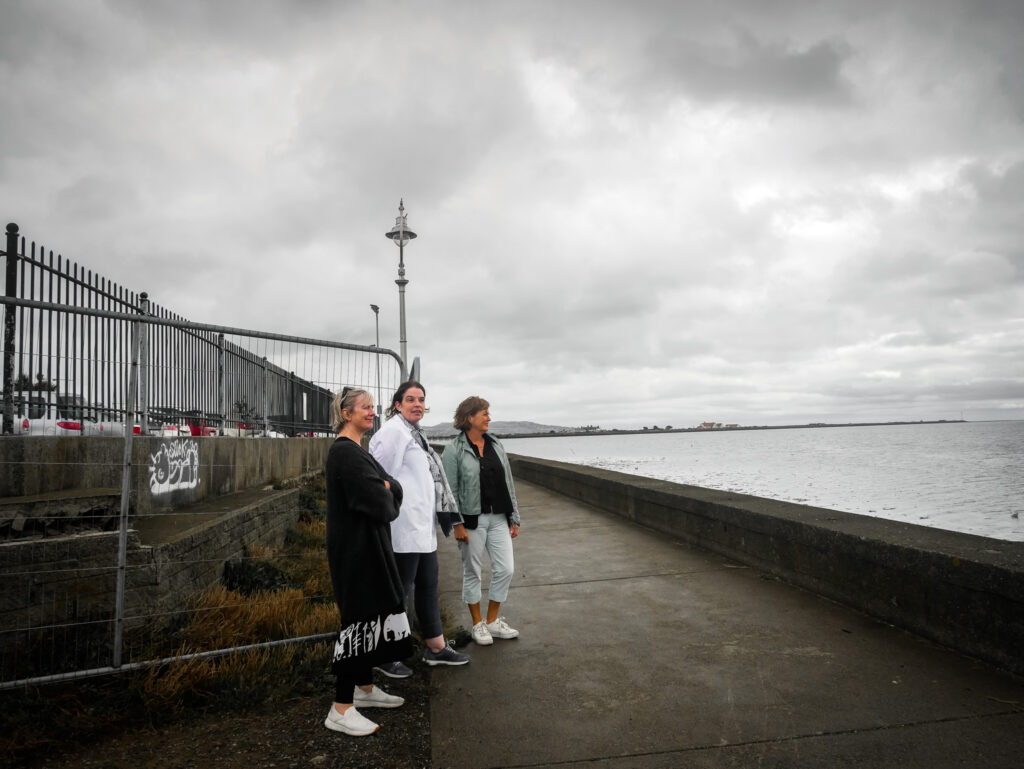
In February 2002, the city experienced its highest tides in hundreds of years, and seawater flooded the long seafront park, which skirts for 3km along the coast and serves as a focal point of community life in the affluent suburb. Waves jumped ashore near Alfie Byrne Road, one of three stretches where water breached flood defences and escaped across the Clontarf promenade. Houses and shops were sandbagged to hold back the flood.
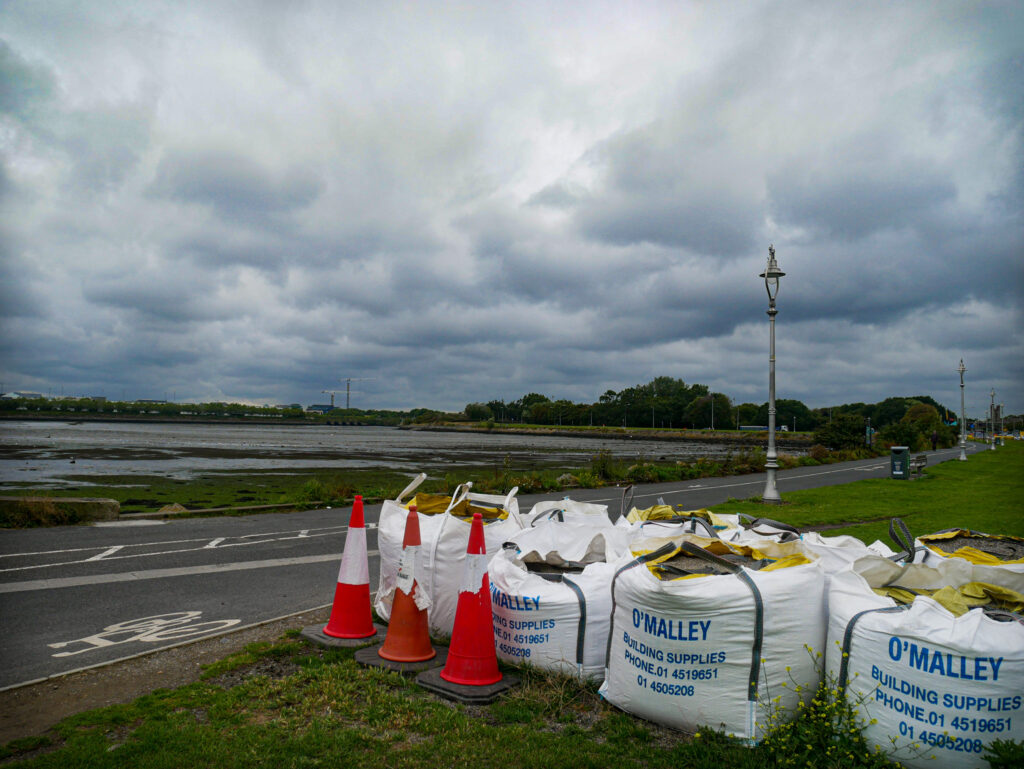
In the decades since, the risk of flooding in this part of the city has gone up four or five times, said Gerry O’Connell, a council engineer, in October 2020. Responses have, infamously, faltered. The council was forced in late 2011 to nix one idea for flood defences after Clontarfers turned out in their thousands to protest that it would destroy the promenade and make it unsafe.
In the decade since, it has been consulting with local residents on a way forward. In May this year, O’Connell told local councillors that his team was drawing up contracts to choose a consultant and team to do design options for new flood defences and a new-look promenade – suggesting progress.
But while residents and council officials have stepped towards each other bit by bit over the last decade while thrashing out the parameters of any new scheme at meetings of a joint working group, they still haven’t quite met.
It has been almost two years since the last meeting of the group, at which council officials had said they had gone as far as they could to reduce heights for the flood defences while residents said that, as walls, they were still too high so they still worried about safety and visibility.
Residents have heard little on what the council has done since and what the brief will be in those contracts, said O’Neill in late August. “We’re certainly not being included.” That makes it hard to answer if she is optimistic this next step of appointing a team to draw up designs will produce something that residents will be happy with, she says. “And I suppose maybe, the answer might be no, because we don’t know.”
On 23 September, a council spokesperson said the heights of the flood defence still aren’t known: “A full re-assessment of all barrier heights is required due to sea level rise and increases in design associated wave heights in the last few years.”
Driven by climate change, sea levels in Dublin Bay have been rising and in the last decade, they’ve been rising much faster than expected, making it more likely that when intense storms and high tides whip together, parts of the city will flood.
The main challenge in Clontarf is to protect against flood risks while preserving the natural beauty of the environment, and navigating the strong attachment to place that local residents have. That same challenge is cropping up all over Ireland and is likely to become even more common, says Darren Clarke, an assistant professor at Dublin City University with a focus on adaptation to climate change.
“This is already a contentious issue as climate adaptation implementation ramps up nationally,” Clarke said.
Facing changes
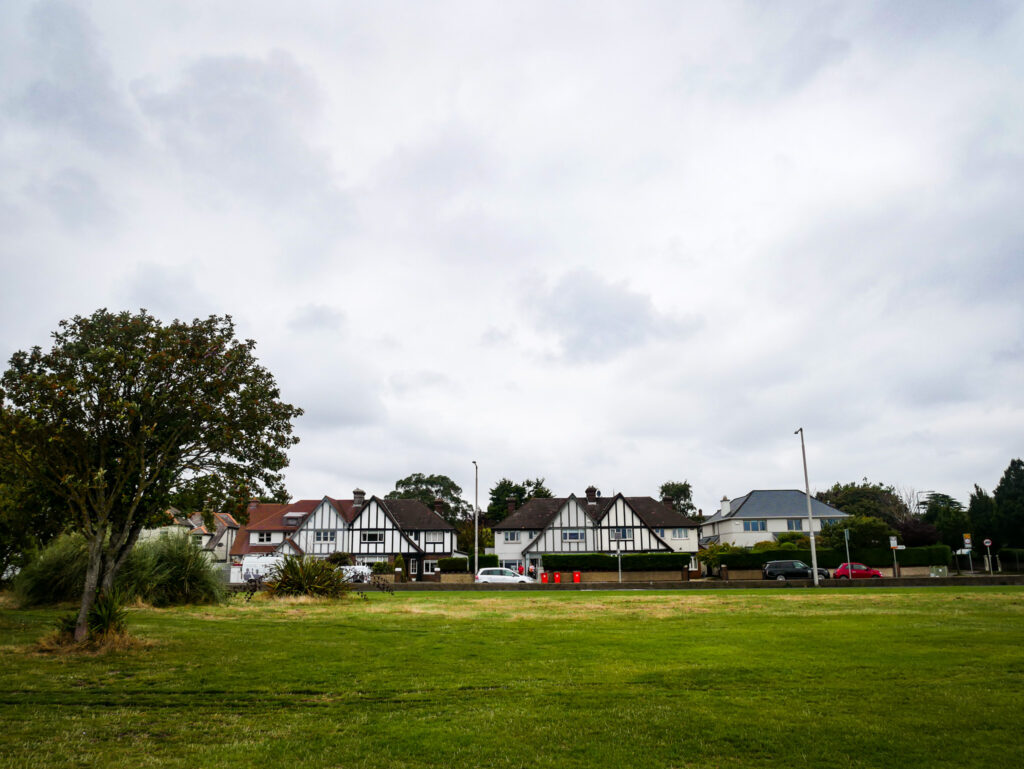
Clontarf is currently the lowest protected point in the city, said O’Connell, the council engineer, to local councillors at a meeting in May. “It’s the area most at-risk.”
As the promenade curves along the edge of the estuary, walkers may barely notice the millimetres in difference as it rises and falls. But those small changes transform coastal flood risk.
Just beyond the renovated seawater pool called the Clontarf Baths, where a short two-way street called Oulton Road runs down towards the seafront to join the main artery of Clontarf Road, is one of the lowest points. A lot of the houses near here have gradually put in their own defences as part of any renovations, said Deirdre Nichol, who also sits on the residents association and the joint working group, recently.
“In terms of walls to enclose it, and gates and things that they can pull up, should there be another flood,” she says.
That some residents are adapting by themselves could be interpreted as a sign of growing alarm. But some residents in these big houses still say that they don’t give much thought to flood risks, that they expect a risk living by the sea, or that it only happens under particular conditions and the chances are low.
Clarke’s analysis of his own survey of 280 local residents in 2014 found that experiencing floods and being at risk, and being in theory willing to adapt, aren’t enough to get people to support preventative actions that would transform landscapes. Other variables like the deep attachment that people have to the places they frequent can temper those impulses, it says.
That’s why, if there is a lesson so far from the Clontarf experience, it is of the importance for the community to be involved in the planning of any defences and for their attachment to a place to be taken seriously, Clarke says.
There are costs to not doing that, he said. It was difficult to repair trust after the council’s proposal a decade ago to build a big mound of earth down the middle of the promenade, he says. Also, the council had already spent €1.1 million developing those flood defence plans when it had to ditch them, he said.
After scrapping those now-infamous plans in December 2011, the council did set up a joint working group with local residents to come up with a better idea for flood defences and the promenade. But it hasn’t agreed new designs yet.
Making climate change impact less abstract
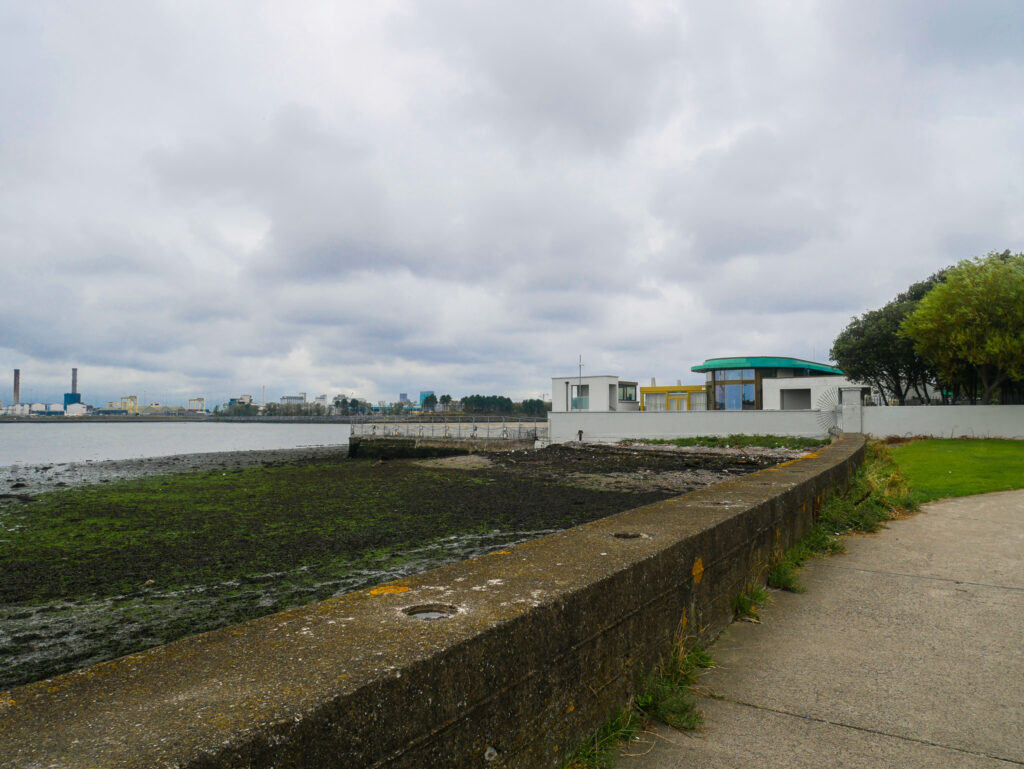
One move that Clarke said he thinks would help residents and council engineers step towards each other in situations such as Clontarf would be better visualisations of what flood defences would look like. Drawings of flood defences are often done by engineers or technical experts, he says. “What they look like visually on a piece of paper to an engineer makes complete sense.” But a layperson can’t always work out what that might look like when built, he says, so if residents can easily see an idea, it makes a constructive conversation more possible. “You can then have discussions about what modifications might be needed.”
Meeting minutes for the joint working group show that the council did hire a company to do 3D visualisations, a kind of drive through from different vantages, to make it easier for people to understand proposed changes – which did spark discussions at the group about different stretches and where exactly walls would run.
But when one video was screened for a wider group of residents in October 2018, the feedback was still largely negative, the minutes say.
Clarke, the assistant professor, says that it might also help to use virtual reality or augmented reality technology to show residents what future floods could be like. Climate change and flood risk are abstract concepts, he says. Immersive technology might help make them real, showing what sea level rise and a storm surge and the kind of flood event expected once every 200 years would do, he says. “Then that becomes potentially much more tangible.”
People may then be willing for more obtrusive flood defences, because they understand what a flood would mean, he says. At the moment that understanding isn’t there, he says.
People who have experienced floods have short memories, he says. “They remember the nicer days along Clontarf compared to the flooding that happens infrequently.”
While, even those who say they know the risk of flooding from the past, he says, maybe don’t quite grasp what’s coming down the road. “Because everything when it comes to climate change is off limits in how we thought about it in the past,” he says.
It’s not really fair to expect people to understand what the flood risks actually are because it’s something they’ve never had to contemplate, he said. “It’s also not fair to expect them to accept something just because engineers have an idea of what’s appropriate.”
At the Meetings
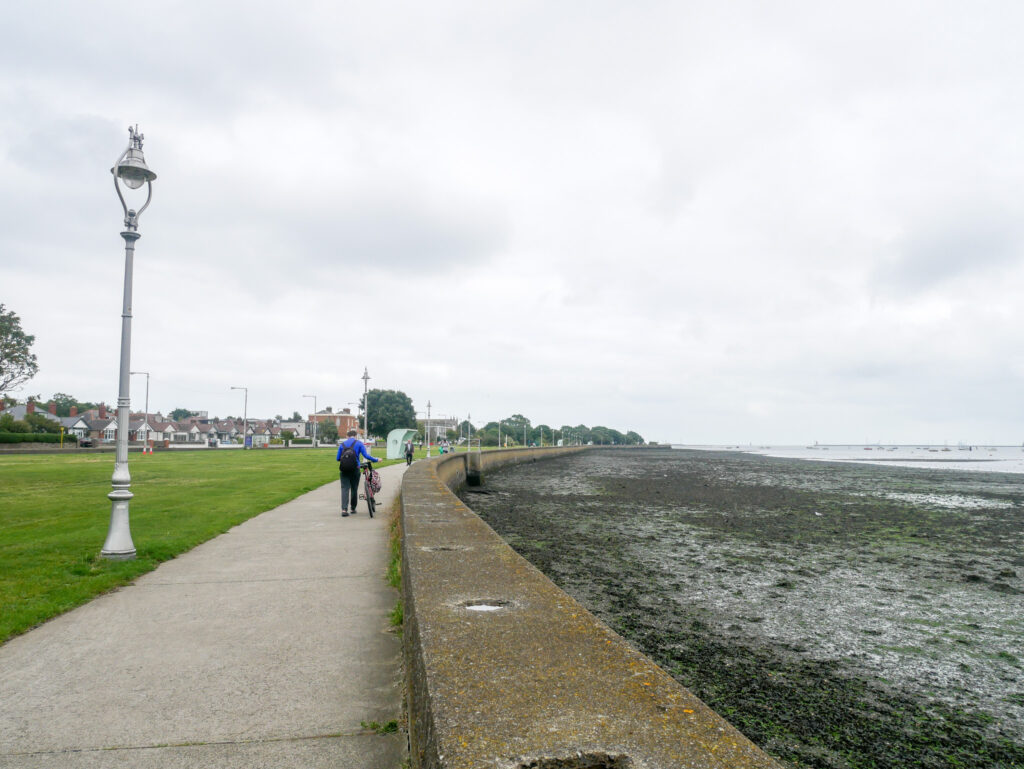
Once formed, that joint working group had quickly come up with an agreed vision with four principles, says Eilis O’Brien, another resident who has been part of the discussions.
They all said the neighbourhood needs a flood defence, but that it also needed to preserve the promenade as an amenity, protect the environment, and allow for passive surveillance, she says, counting them off on her fingers.
In October 2013, those on the working group first discussed the idea it would go on to pursue: to have two lower walls rather than one higher one, meeting minutes show. That would mean one wall along the seafront and a second, taller wall on the other side of the linear park alongside the road and cycle track.
Dublin City Council officials have spent the years since refining that idea, commissioning more detailed modelling of the flood risk and waves from consultants, getting visualisations, and tweaking the wall heights.
Officials were sceptical at first of the idea of “demountable” walls to be put up when flood alerts. Cost and the need to put them up manually were an issue, they said. But they later agreed to some along the highest stretches, so that day to day the defences would be lower at those points.
But they later agreed to some along the highest stretches, so that day to day the defences would be lower at those points.
By October 2020, officials were saying that “the absolute minimum defence heights, given the increased climate change situation, has been reached”. The maximum height of the walls, including demountable sections for the highest bits, would be 1.32 metres or 4 foot 4 inches, the minutes say, which was almost a metre lower than a previous proposal.
When the working group talked about that, one resident, whose name is redacted, said that the bottom line was still, when it came to public safety, whether people were visible on the pedestrian path beside the sea wall. Two-thirds of it would be higher than what they considered safe, they said.
On 23 September, a council spokesperson said that passive surveillance and protecting amenity have to be balanced against reducing flood risks to people and property.
“Once building [sic] have been flooded elsewhere in the city the height of the required barriers is not a particular concern of the residents, they just want it to never happen again in their lifetime,” they said.
Is There Another Way?
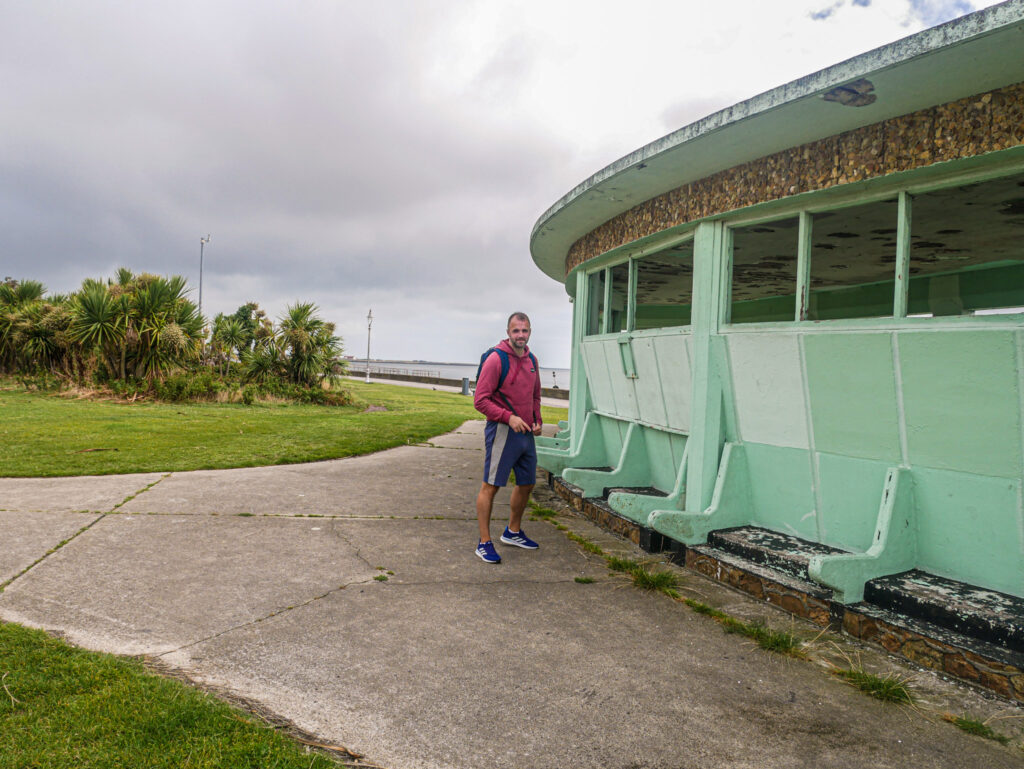
On a Thursday afternoon in early September, Andrew Maher was stretching his calves ahead of a jog, having hopped two buses from a treatment centre across the city in Blanchardstown, as he sometimes does, for a walk, swim or run.
Nearby, Steven Poindexter sat on a bench, big headphones pulled over his ears, gazing out at the mudflats and wader birds, taking the afternoon to get his bearings as a new tourist to the city.

On a bench further up was Billy Bradshaw, a white flat cap on his head, looking to the other side of the estuary and the bulk of a Stena line ship to Holyhead pulling out of Dublin Port.
Further still, two teenagers lay on their fronts beside a low wall, chatting, their heads close together, and a grandmother pushed a buggy of sleeping twins, and a nurse – who had not long ago handed in her notice – was scooping a ball over and again to toss it to a big black dog.
The issue with the first scheme had been relying too much on hard engineering and ignoring what an important amenity the park is, says O’Neill, who lives in the neighbourhood and sits on the Clontarf Residents Association.
“It was designed by engineers,” she says. “Environmental engineers who deal with civil projects, and they were taking the water main along the park.”
“It wasn’t designed by people who understand the nature of public space, the nature of amenity, the passive surveillance,” says O’Neill. “So it really obliterated the park. It wasn’t there anymore.”
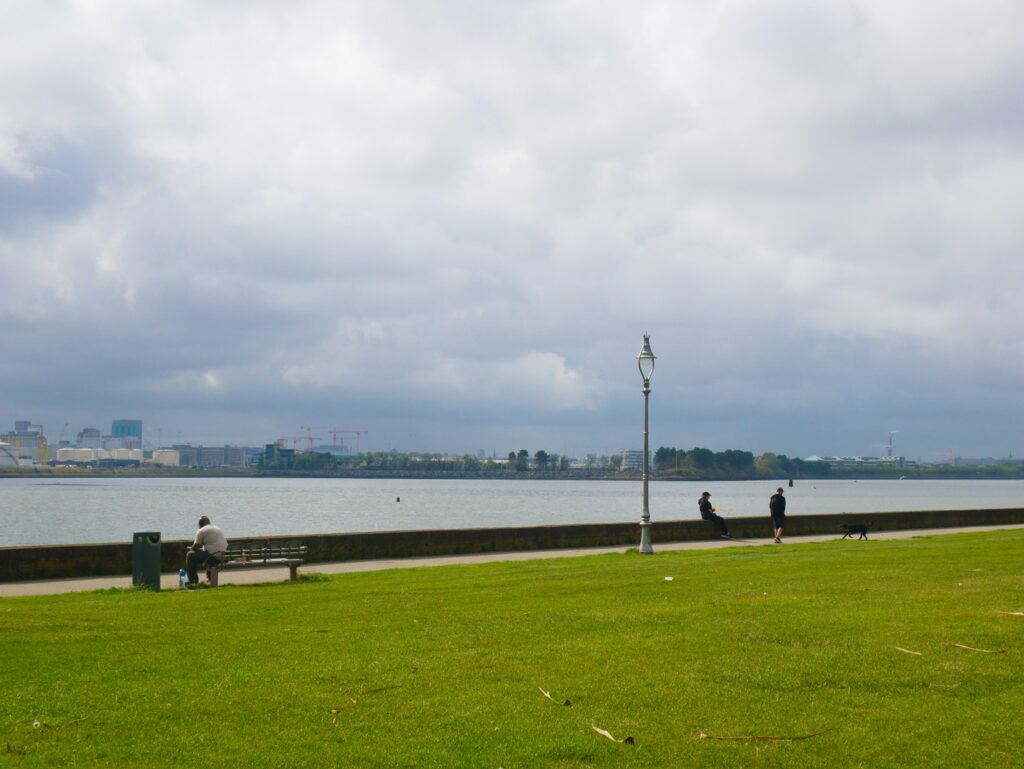
That echoes criticisms of flood schemes elsewhere in Ireland and the approaches favoured by councils and the Office of Public Works.
Clarke says that engineers are brilliant at what they do. “But they have one specific plan and that’s to stop the water coming in. They don’t necessarily have the skillset to understand what’s right for a community,” he says. “Especially in an area like this.”
Residents have seen it as their role to consistently remind the council to protect the amenity of the promenade and stick to that vision agreed early on by the joint working group, they say.
Over the last decade, the council’s approach has changed in the case of Clontarf.
The team it plans to appoint to design the flood defence and promenade redevelopment is a multidisciplinary one, said a council spokesperson at the end of December. But residents say they are still worried about whether the brief being drawn up, that the team will have to stick to, will be too focused on hard engineering with set-height flood walls.
O’Neill says that residents’ representatives had presumed that the best way to approach it all would be for Dublin City Council to procure a design team in a way that didn’t assume a particular solution. “These were the discussions that we really got into difficulty with.”
They point to the flood defence scheme in Cleveleys, a town just north of Blackpool in the United Kingdom with around 11,000 people living there. That took 10 years, cost £26 million, and wasn’t just a wall. It included a whole redesign of the seafront with a split-level promenade, and a waved revetment – basically concrete steps sloping down to the water – a park and new leisure complex.
Set out a brief with the vision, what they have to do, and then leave it to see what design solutions they come back with, O’Neill says. “You’re going to get the best ideas in the world that way.”
The minutes from October 2020 show officials and residents were by then frustrated. Residents repeated that they wanted to go out to tender on an integrated design, one that looks at the flood defence and promenade together, so they would have something to put before the community other than the wall.
That December, the council’s director of services for the north city at the time, Coilin O’Reilly, said that a design competition wasn’t feasible given the budget. The council has design capabilities in-house to develop fully costed design options that will be more acceptable to people while managing the various conflicting demands, he said.
As he saw it, the next steps were for the council itself to do any needed surveys, develop design solutions within the proposed budget, and bring the options back to the joint working group to review, before doing an open public engagement process.
It’s now reversed on that, it seems, and is moving design out-of-house – but residents haven’t seen what is in the draft contracts so don’t know if the parameters still include flood walls at a height that they think the local community would not back.
Setting a Budget
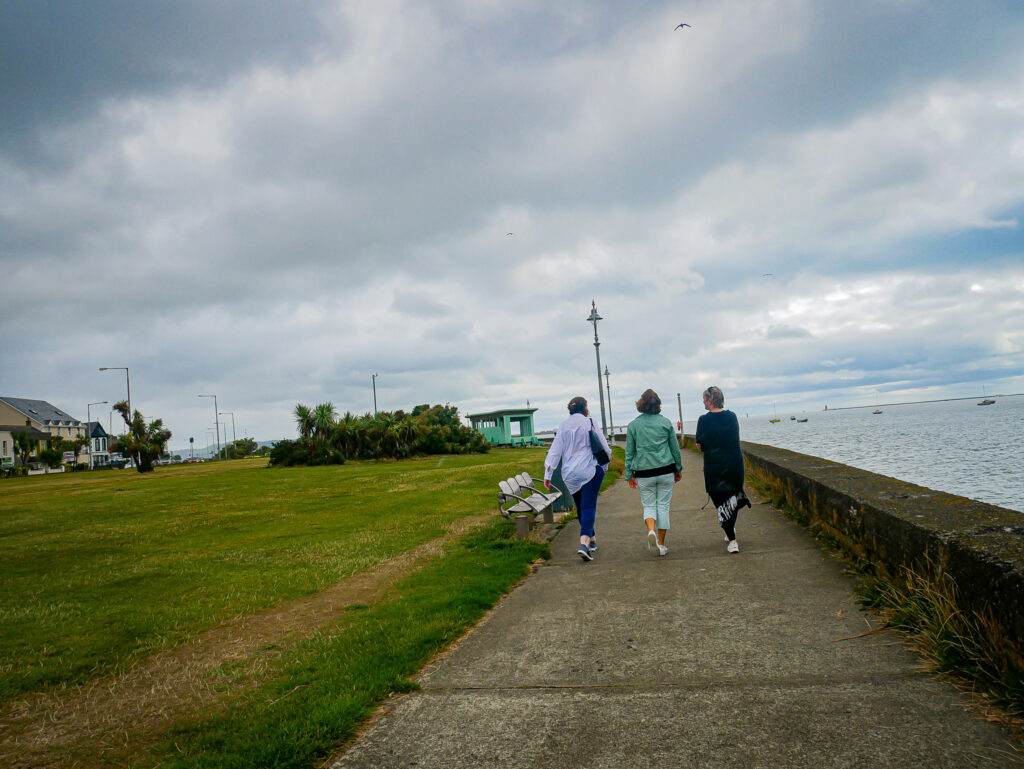
“We can’t tell why this has taken so long,” said O’Brien, another resident who has been part of the discussions. “But one could surmise that the budget problem is core to everything.”
In March 2019, Gerry O’Connell, the council engineer, said he had run the figures. The OPW would give €6 million plus VAT to build the flood defences, he said. Maintenance costs would be separate.
Other agencies would chip in for different strands of the promenade redevelopment. Roughly €3 million from the National Transport Authority for a cycleway, €2 million for the promenade redevelopment from the council’s Parks Department, and €1.5 million from Irish Water, said O’Connell. In total: €12.5 million.
How much the council can spend on flood defences is decided by the Office of Public Works (OPW), which sets a budget based on a cost-benefit analysis.
That is based on the estimated damages to properties from future floods, with some added on for damage to utilities and costs to emergency services. It also counts some intangible damages, like the impact on people’s mental health, or the costs of evacuation or the loss of earnings.
A big gap in economic costs and benefits is one reason why ideas like a tidal barrage to protect the city, stretching across the end of the Bull Walls, or building up islands offshore to break the waves, have been ruled out for now, but could be revisited in the future as sea levels rise, and the weather changes, and the risks of flooding wash further inland. And that’s why the amount available for Clontarf is limited.
A council spokesperson said that the Cleveleys project, which cost £26 million in 2020, would cost around €40 million now. And it only covered 1km and protected 9,000 buildings. While the Clontarf scheme needs to cover 3km and protect only 400 buildings. “The cost benefit of the Clontarf Scheme is therefore around 4% of that of the Cleveleys project,” they said.
By that measure, if the risk of flooding was the same, only €1.6 million should be spent on Clontarf, they said.
But O’Brien says that the OPW should take more than it does into account when deciding how much to spend. The project is about much more than a question of avoiding damage to local residents and businesses, she says.
It needs to factor in the attachment that people have to the seascape, and the benefits from a scheme that would recognise amenity, she says. Government should not see this as just a local project for the people of Clontarf, she says. “Because this is an amenity for the city.” People come from all over the city to walk or sit under the big skies, said O’Brien, which was striking during the pandemic. “There were throngs of people. And there are still thousands of people use this every single week.”
A council spokesperson said that loss of amenity and biodiversity is taken into account in what’s called the “multi-criteria analysis” for the project. That’s done once preferred options appear, they said.
“Because most coastal flood alleviation projects require some kind of barrier there is nearly always a loss of amenity to some degree and the aim is to minimise this,” said the spokesperson.
A spokesperson for the OPW said that it does, as part of funding for the main flood relief scheme, provide money for what might be called public realm works. “The works assist in integrating the flood relief scheme into the area.” It welcomes and encourages councils to, outside of this, explore the possibility of using multiple funding streams to deliver any bigger project not directly related to the flood relief scheme, where practical, they said.
In Clontarf, Dublin City Council is also upgrading the cycleways, laying water mains, and doing park upgrades, they said. “All of which have their own funding sources.”
O’Brien asks whether it makes sense to fund projects like this. “Knowing that it is going to be expensive, is it actually fair to leave it to cash-starved councils?”
“Why isn’t this something that is tackled at a national government level? I think it’s actually quite disgraceful that we don’t have a central fund for exactly these projects,” she says. “Because this isn’t actually a local issue. This is a national issue.”
A council spokesperson said it had looked for European Union money with no success. “The amounts required are quite substantial and would require a number of years and a significant environmental justification to acquire.”
“We looked at digging out the promenade and replacing its contaminated ground with better soil but this would cost around €100m,” they said.
Clarke, the assistant professor at Dublin City University, says that whether or not some projects should get bigger budgets is a difficult question. “There’s an issue of fairness that maybe a less affluent community that doesn’t have the resources to fight with the council gets something that’s put in and that’s not sympathetic to the environment and they just have to accept it,” he said.
It wouldn’t be fair either if the knock-on impact of a larger budget for the Clontarf promenade was to delay or restrict projects elsewhere in the city, he said.
Looking Ahead
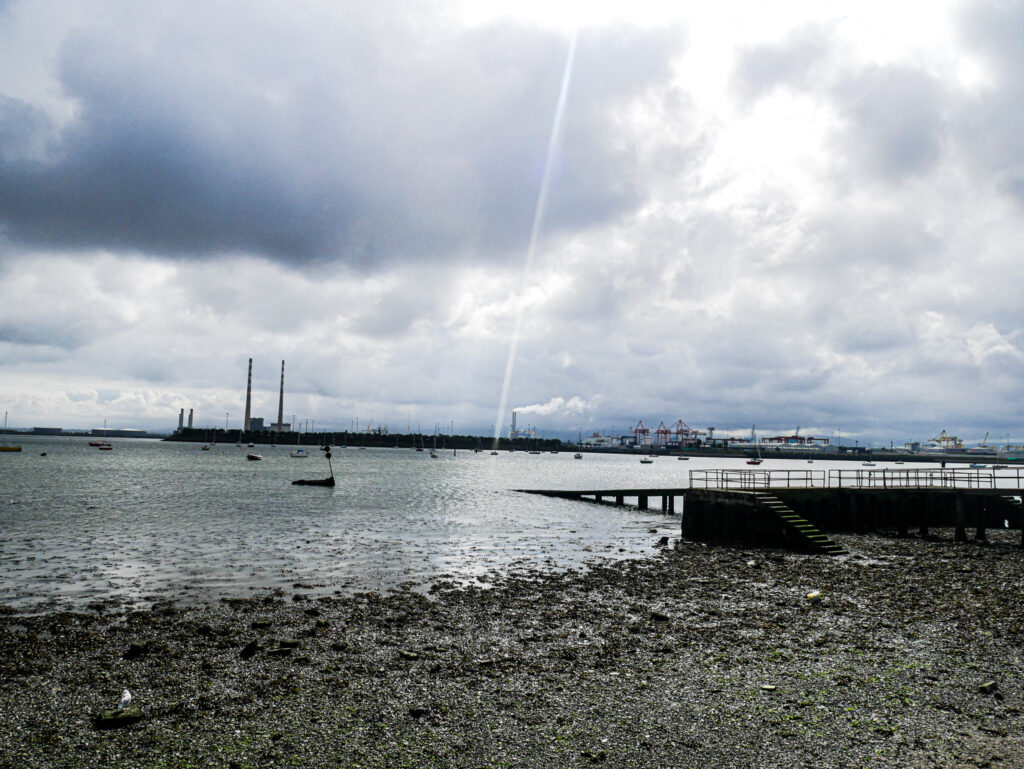
Clarke says there is another conversation that needs to start now, that hasn’t really happened in Ireland to date. “One aspect that I think is also going to have to be given real consideration in and around Dublin is – particularly low-lying communities that are on the coast, like Clontarf, like Sandymount – is relocation,” he said.
In other words, moving people from areas at massive future flood risk.
Conversations need to start now, he said, rather than when big flood events have overwhelmed neighbourhoods in decades to come.
The challenge is that these urban areas are usually in affluent parts of the city where politicians and policymakers may find it hard to talk to communities because of the influence they have, he said. But “there’s no question, the conversation on relocation needs to happen sooner rather than later”, he said.
People’s sense of place attachment is going to change, he says, but doing that through a process whereby people get a say in the nature of that change seems fairer than one by which they don’t.
Because it could come as a result of flood defences, or it could be because of great floods driven by sea-level rise and storm changes which destroy properties and sever the relationship people have with the place, he says.
It’s in that context that the conversation around relocation has to be had, he says. “In those instances, relocation has to be brought up in discussions, and it’s currently not.”


